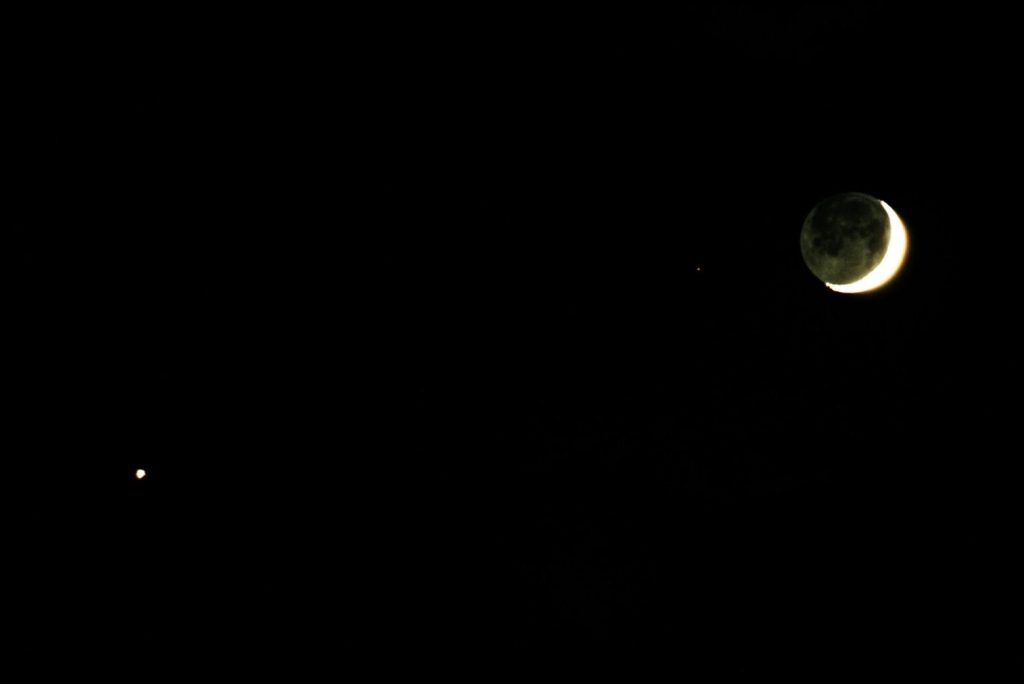What’s up in the sky? February 2025 lineup of planets, eye-catching alignments – WTOP

TRAFFIC ALERT: What to know about DC road closures and parking restrictions for the annual Lunar New Year parade Sunday
Greg Redfern | skyguyinva@gmail.com
February 1, 2025, 4:33 AM“What’s up in the sky?” is a recurring feature and publishes on the first of every month. You can find it on WTOP’s The Space Place. Email Greg your space questions and he might answer them in the next edition.Each month, WTOP is showcasing the best the sky has to offer stargazers regarding the moon, planets and stars. Space-related events in the D.C. region will be included as well.Let’s get to the sky for February 2025!January 2025 was a very exciting month and start to the New Year for stargazers. February has a nice lineup as well of planets and some eye-catching alignments.The bright and glorious constellations of winter continue to greet you as soon as it gets dark. Take some time to find Orion, the Hunter; Taurus, the Bull; Gemini, the Twins, and others.Highlight of the month Feb. 1: The young waxing crescent moon and bright Venus pair up in the southwestern sky at dusk for a stunning view — look for earthshine on the moon. Saturn will be just about a vertical fist-width, held at arm’s length, below this beautiful pair.Feb. 5: The waxing gibbous moon once again keeps close company with the Pleiades Star Cluster — binoculars recommended.Feb. 9: Mars, the waxing gibbous moon and the star Castor, form an impressive isosceles triangle in the East as it gets dark.Highlight of the month Feb. 14: For our viewing, Venus will be at its brightest in the Southwest. It’s apparent magnitude (how astronomers measure the visual brightness of the objects in the sky) is a whopping -4.9.At a dark sky location with a white sheet on the ground, you could possibly see your shadow cast by Venus — detailed instructions on how to do this are online. I have experienced this at pristine locations and it is something to see.Highlight of the month Feb. 14: If you happen to be at a dark sky site in the next two weeks, make sure you look for the zodiacal light in the western sky as it gets dark. Brilliant Venus most likely will be in the triangular shape of the zodiacal light which will be a real visual and photographic treat.Try taking an astro-pic with your smartphone or digital camera. For best results, the camera should be mounted on a tripod or held very steady for a time exposure of several seconds.Feb. 17: The waning gibbous moon is very close to the bright star Spica in the hours before dawn in the Southwest. Binoculars will help the view.Feb. 21: The waning crescent moon will be very close to the red supergiant star, Antares, in the hours before dawn in the southeast.Feb. 24-25: Mercury pairs up with Saturn for a very close encounter in the west at sunset. You will have to have a clear horizon to see the pair as they will be low and in bright twilight. Use Venus as a guide, look straight down toward the horizon at 6:30 p.m. — Mercury is on the right. Binoculars will help immensely. Worth trying an astro-pic, too.Feb. 5: First Quarter
More space stories
PHOTOS: Northern Lights glow over DC region
WTOP’s top space story of 2024: The sun looms large
Are you really seeing drones in the sky? There are other possibilities
Feb. 12: February’s full moon is called the Snow Full Moon. The D.C. area certainly had snow in January!Feb. 20: Last QuarterFeb. 28: New MoonMercury is low in the southeast sky about an hour before sunrise and binoculars will help immensely to find the bright yellowish planet. It transitions to the evening sky in the southwest toward the end of the month to pair up with Saturn.Venus blazes above the southwest horizon as it gets dark, you can’t miss it.Mars is in the East as it gets dark and has faded in brightness. In a small telescope, some surface features can be spotted and identified with this nifty tool.Jupiter is bright and located high in the sky with only the moon and Venus being brighter than the king of the planets. A pair of 7×50 binoculars will show the four main moons of Jupiter looking like “stars” in a line which constantly changes. You can identify the moons online.A small telescope can reveal features in Jupiter’s atmosphere.Saturn is low in the southwestern sky at dusk. A small telescope will show that Saturn’s rings are currently almost edge on — quite the sight.Uranus can be spotted with binoculars using this online star chart to locate it. In small telescopes, you can detect the color of the planet but not much else.Neptune needs a telescope to be viewed and it is worth seeing its deep blue color.Pluto is way out there in the solar system and requires taking images through a telescope spaced days apart to hunt it down.February events at Virginia State Parks can be found here.The NOVAC General Meeting will be held at George Mason University. Check the calendar for the date and other February astronomy events.The National Capital Astronomers will have its meeting at 7 p.m. on Feb. 8.The Analemma Society holds Friday night public viewing sessions of Observatory Park at Turner Farm in Great Falls, Virginia, from 7:30-9:30 p.m. Those hours will remain until next spring.The Smithsonian Air & Space in D.C. and Chantilly has loads of astronomy-related activities in January.You can check here and here for astronomy clubs that are outside the D.C. area.Download NASA’s 2025 Science calendar, which features out-of-this world pictures and information.The Planetary Society’s Space Events 2025 Calendar is another resource for tracking space missions.Use this useful tool to create a custom star chart for your location to help you find your way around the stars.Follow Greg Redfern on Facebook, Bluesky and his daily blog to keep up with the latest news in astronomy and space explorationGet breaking news and daily headlines delivered to your email inbox by signing up here.© 2025 WTOP. All Rights Reserved. This website is not intended for users located within the European Economic Area.5425 Wisconsin Ave
Chevy Chase, MD 20815
hello@wtop.com
202.895.5000
Copyright © 2025 by WTOP. All rights reserved. This website is not intended for users located within the European Economic Area.






